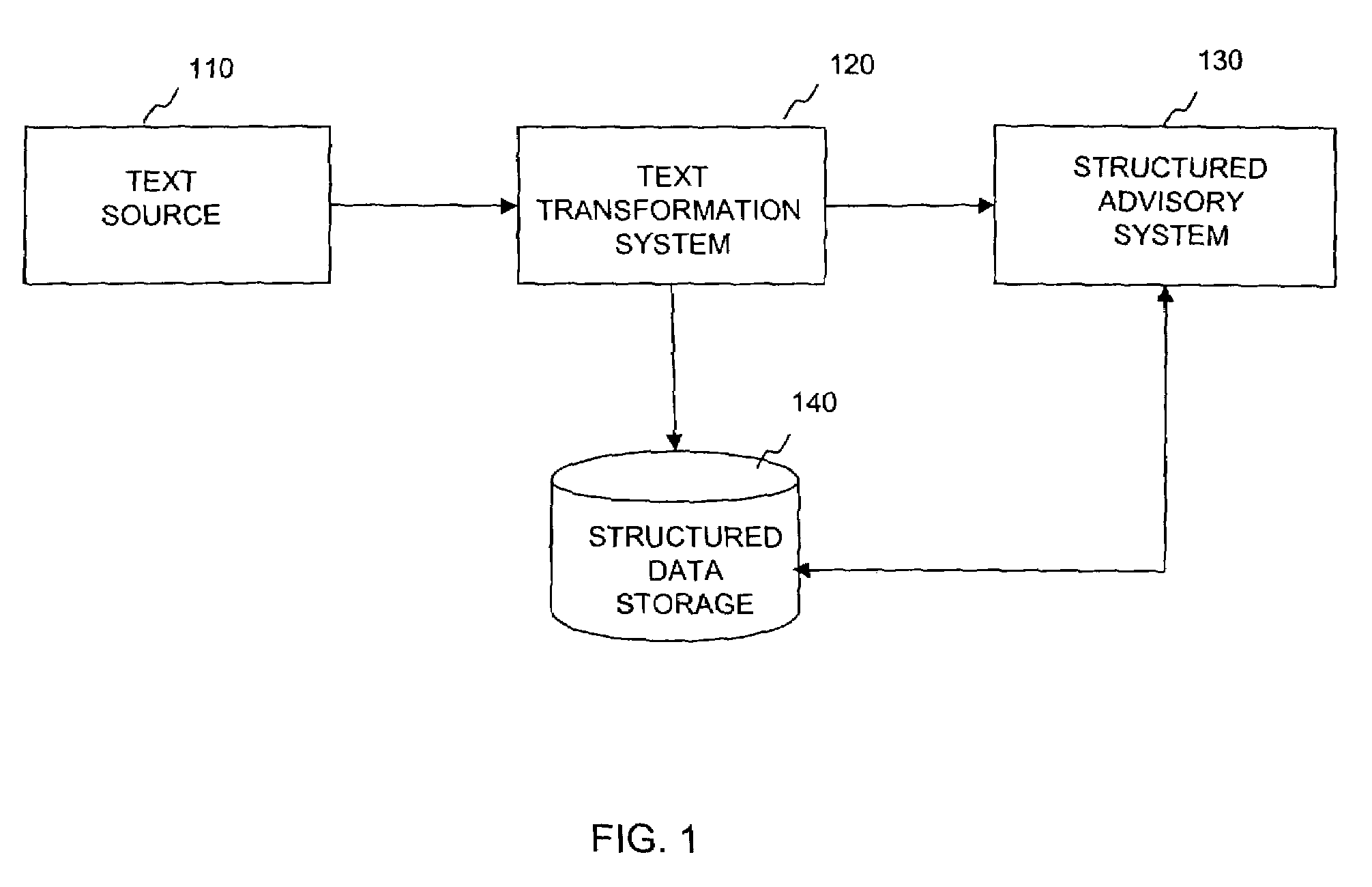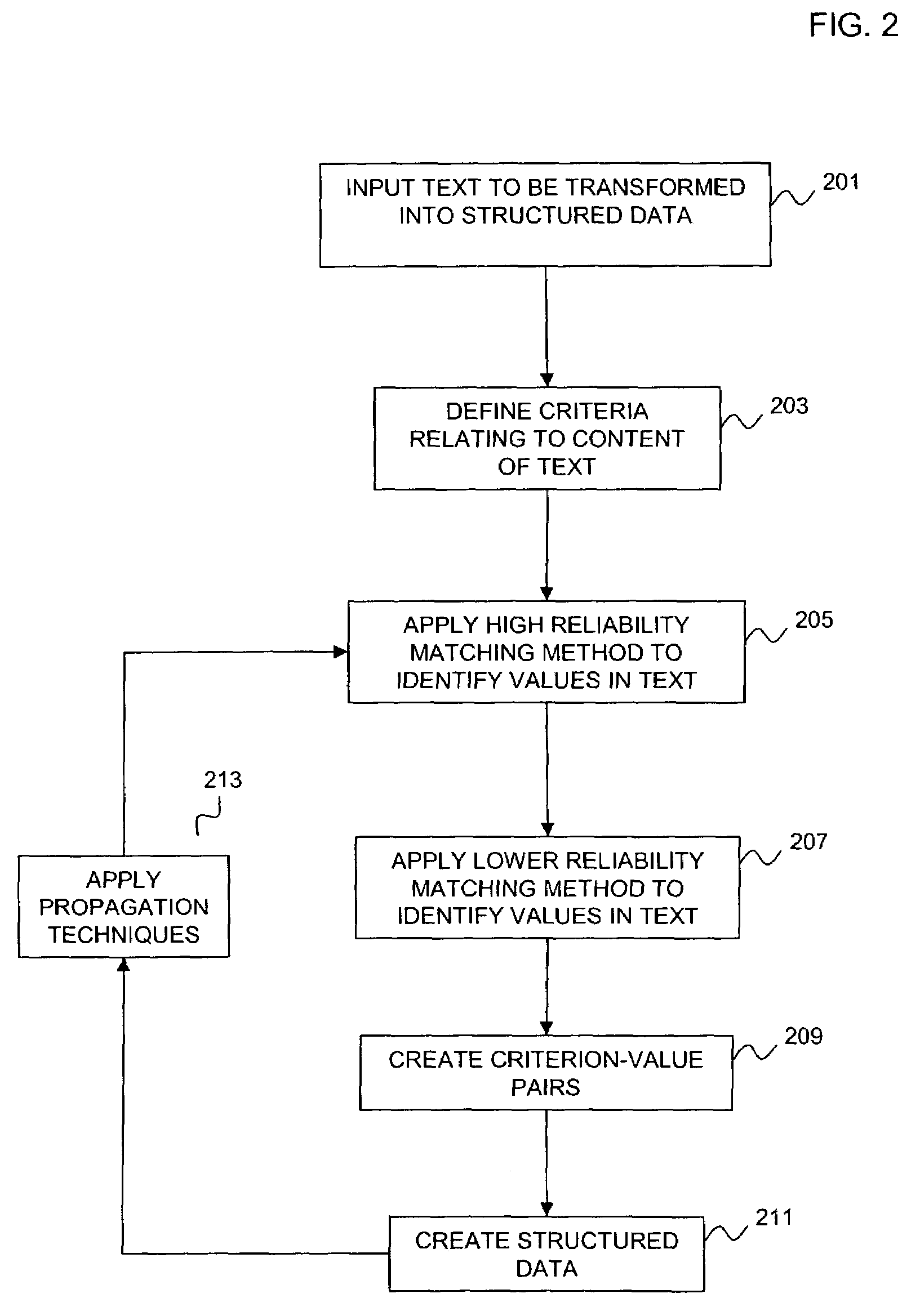System method and computer program product for obtaining structured data from text
a structured data and program product technology, applied in special data processing applications, instruments, electric digital data processing, etc., can solve the problems of limited ability of advisory systems to adequately interpret numerical data, lack of means for exploiting textual content, and large amount of text data stored by many organizations, etc., to achieve simple and reliable results and high reliability
- Summary
- Abstract
- Description
- Claims
- Application Information
AI Technical Summary
Benefits of technology
Problems solved by technology
Method used
Image
Examples
Embodiment Construction
[0028]Referring now to the drawings, wherein like reference numerals designate identical or corresponding parts throughout the several views, and more particularly to FIG. 1 thereof, there is shown a computerized system for transforming text into structured data usable in a structured information system according to an embodiment of the present invention. The system of FIG. 1 includes text source 110, text transformation system 120, structured advisory system 130, and structured data storage 140.
[0029]The text source 110 is any suitable workstation, server, or other device for communicating with the text transformation system 120 to provide unstructured or semi-structured text to the text transformation system 120. The text source 110 may use any suitable protocol for communicating with the text transformation system 120, and may be implemented using the computer system 601 of FIG. 6, for example. In one embodiment of the invention, the text source 110 may be a computer terminal ope...
PUM
 Login to View More
Login to View More Abstract
Description
Claims
Application Information
 Login to View More
Login to View More - R&D
- Intellectual Property
- Life Sciences
- Materials
- Tech Scout
- Unparalleled Data Quality
- Higher Quality Content
- 60% Fewer Hallucinations
Browse by: Latest US Patents, China's latest patents, Technical Efficacy Thesaurus, Application Domain, Technology Topic, Popular Technical Reports.
© 2025 PatSnap. All rights reserved.Legal|Privacy policy|Modern Slavery Act Transparency Statement|Sitemap|About US| Contact US: help@patsnap.com



